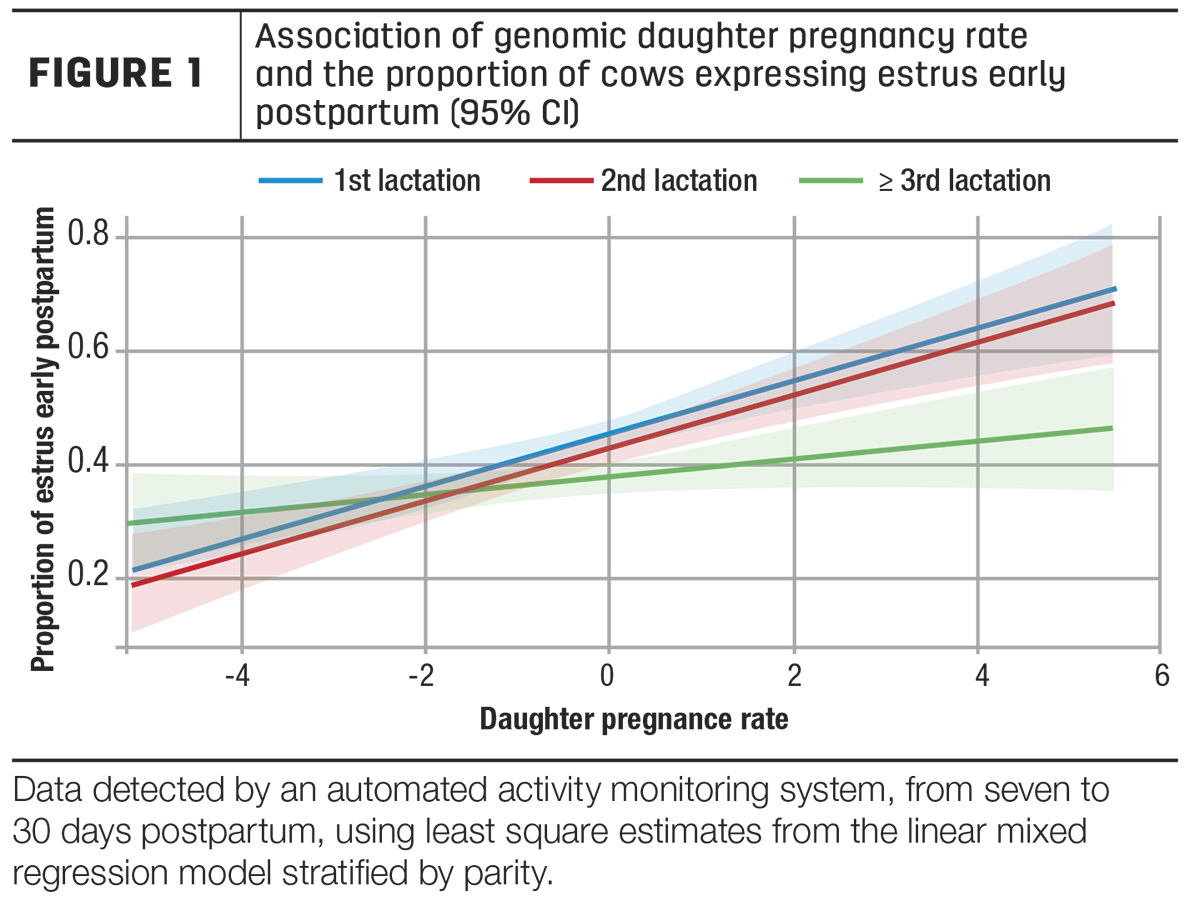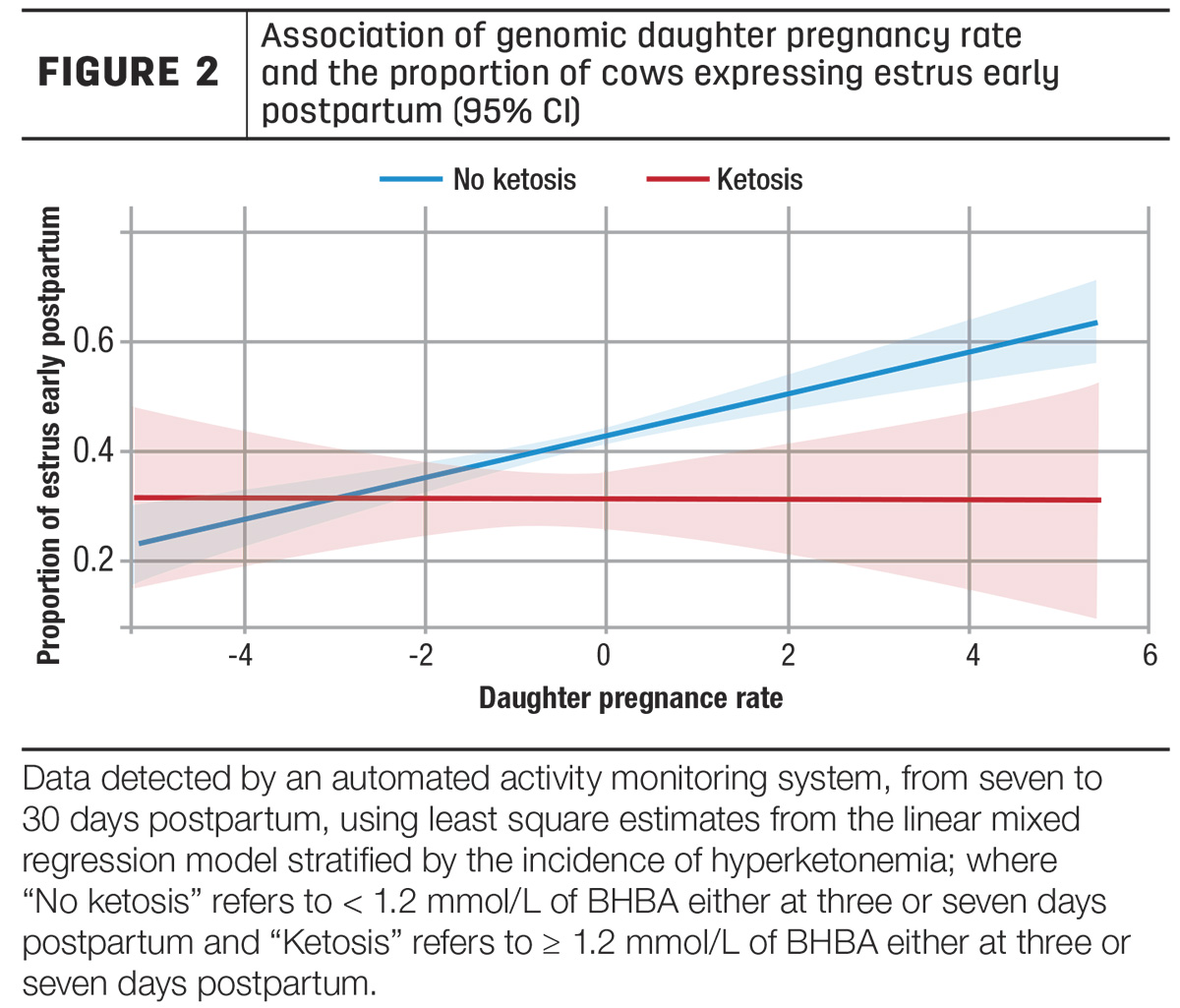The transition period in lactating dairy cows is critically important, as 75% of diseases in dairy cows typically occur within the first three weeks postpartum. Postpartum health disorders can be reflected in lower milk production, metabolic imbalance, increased health disorders, decreased fertility and greater culling risk. During this period, cows experience a negative energy balance due to the high energy demands for milk production, which could lead to metabolic disorders such as ketosis. Increased negative energy balance is associated with greater circulating concentrations of non-esterified fatty acid and beta-hydroxybutyrate (BHBA) and has been associated with reduced reproductive performance.
Monitoring early postpartum cows
Early resumption of cyclicity within the voluntary waiting period (VWP) has been associated with better reproductive performance. Anovulation is associated with longer calving intervals, lower fertility at first service, increasing days to conception – and therefore reduced profitability in a dairy herd.
The mechanisms leading to ovulation early postpartum are complex and multifactorial and dependent on the cow’s health status and metabolic condition. The gold standard for identifying anovulatory cows before the VWP is either by transrectal ultrasound, for visualization of corpus lutea, or by blood or milk progesterone concentrations early postpartum. These methods are time-consuming, but automated activity monitoring systems bring the opportunity to recognize cows with poor reproductive performance without further effort.
Cows that do not show estrous activity – detected by a neck-mounted activity monitoring system – between seven to 60 days in milk (DIM) have reduced reproductive outcomes. Cows with transition disorders (i.e., stillbirth, retained fetal membrane, puerperal metritis or subclinical ketosis) have greater chance for being anestrus, emphasizing the importance of transition cow health for estrous expression in early lactation.
Utilizing genomic data for reproductive improvement
Genomic merit for genomic daughter pregnancy rate (GDPR) is calculated using the risk of pregnancy of a bull's daughters and predicts the genetic improvement in pregnancy rates for a future daughter of a specific bull. Genomic daughter pregnancy rate can be used as a criterion to enhance selection for fertility of lactating dairy cows due to the advancements in genetic prediction. A recent study from our lab has reported greater GDPR was positively associated with pregnancy per A.I. at first insemination, had increased pregnancy per A.I. for all inseminations and decreased risk for pregnancy loss. The positive association between fertility and GDPR suggests this trait can be used to improve fertility in dairy cattle.
Using automated activity monitoring with genomic data might be an opportunity for the dairy industry to improve reproductive performance, optimize herd management practices and increase profitability. This concept has been described as targeted reproductive management. Major steps in the development and implementation of targeted reproductive management programs for dairy cattle include identification and validation of robust predictors of reproductive outcomes and overall cow performance. Failure of estrous behaviour within the VWP has been shown to be an important predictor of cows with poor reproductive performance.
Our study assessed first estrous activity postpartum (seven to 30 days in milk), detected by an automated activity monitor, and its association with genomic daughter pregnancy rate. A total of 4,119 lactations from 2,602 Holstein cows were included in the study. Hair samples were collected from the tail switch of every animal, with most samples being taken at approximately 2 months old, and cows were genotyped using a single nucleotide polymorphism platform. All first-calving cows were equipped with a neck-mounted activity monitoring system. For each estrus early postpartum (seven to 30 days in milk), estrous intensity and the duration of estrus were determined. The estrous intensity was defined as the maximum value at an estrus event. Estrous duration was defined as the interval, in hours, from the onset to end of an estrus event.
Postpartum cows were examined daily by the farm personnel from calving until 10 DIM. Calving was classified as assisted, forced calf extraction and unassisted. Retained placenta, ketosis and left displaced abomasum were also recorded.
Association between genomic daughter pregnancy rate and estrous activity
Cows with a greater GDPR had greater intensity and longer duration of estrus at the alert, independent of lactation. Overall, resumption of estrous expression was 41.2%, where 58.8% did not have an estrus event, 31% of the cows had one event of estrus, and 10.2% of the cows had two or more events of estrus early postpartum (seven to 30 DIM).
First-lactation cows were more likely to have an estrus event early postpartum when compared with second- and third- or greater-lactation cows, as shown in Figure 1.

There was no difference in the proportion of cows expressing estrus early postpartum in cows with assisted or unassisted calving, retained placenta or left displaced abomasum. However, cows with ketosis showed fewer alerts postpartum compared with cows without ketosis. Furthermore, there was an interaction of the incidence of ketosis and GDPR on the proportion of cows demonstrating estrus early postpartum (Figure 2).

An increase in GDPR was associated with a greater proportion of cows expressing estrus early postpartum. Greater GDPR was also associated with a greater intensity and longer duration of estrous expression early postpartum. The results from this study provide evidence that GDPR can be associated with resumption of estrous expression postpartum and can be used as a tool for better reproductive management.











